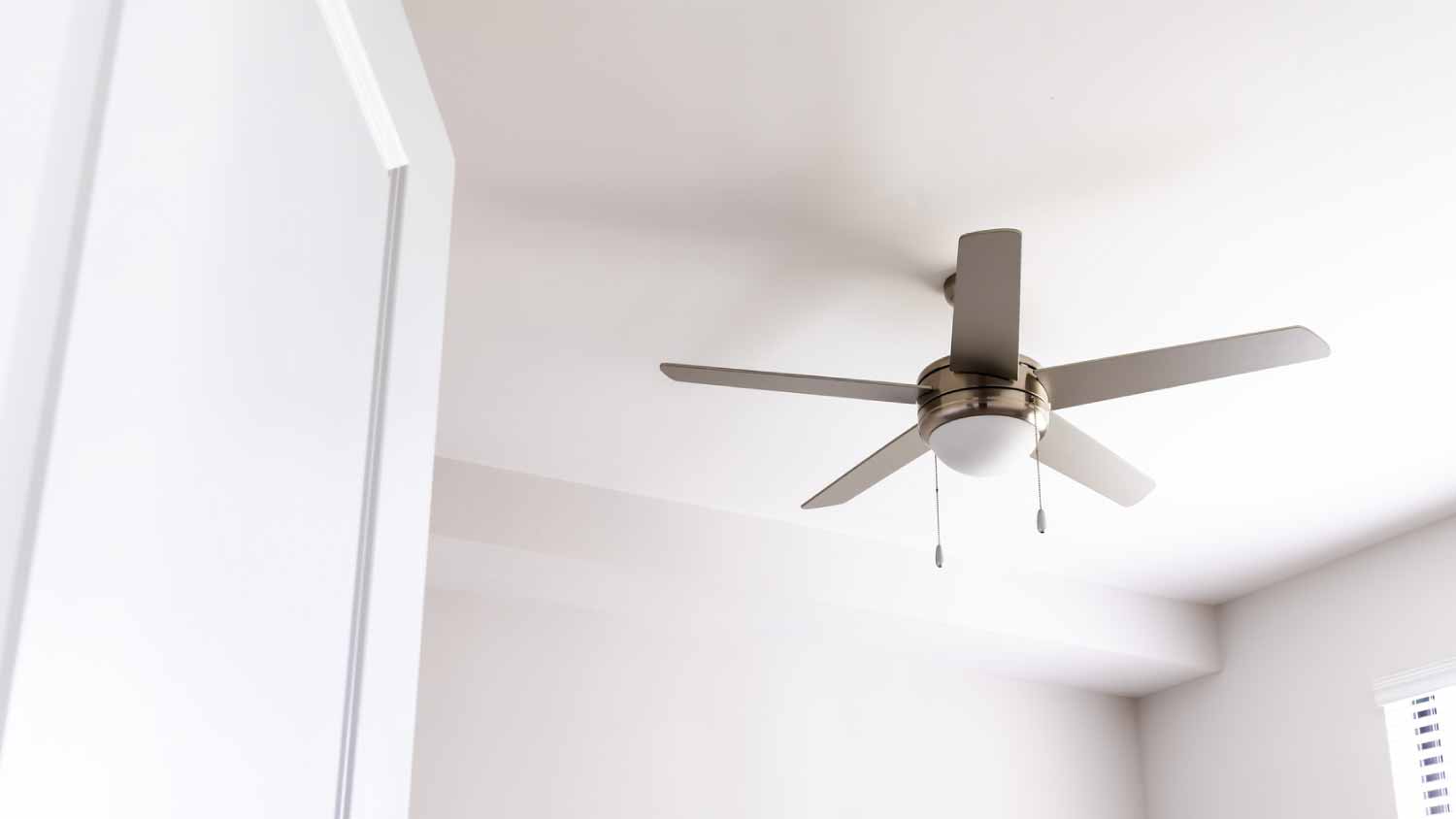How to Install a Mini-Split System: 10 Steps to Ductless Cooling
Ductless AC is a challenging DIY, but the reward is a cool space you’ll enjoy all summer


- Tape measure
- Adjustable wrench
- Torque wrench
- Power drill
- Hole saw
- Ductless mini-split system
- Hollow drywall anchors
- Screws
- Electrical tape
- Foam insulation sleeve
Central air isn’t the only option for cooling your home. Mini-split air conditioners have several attractive advantages over traditional AC—they’re more efficient and flexible, helping homeowners heat and cool individual rooms without ducts. Some systems are DIY-friendly, but installation is still complex and requires knowledge and a lot of care. Use this guide to learn how to install a mini-split system in your home.
Running Power to a Mini-Split System
A mini-split system requires high-voltage electrical connections. Only handle electrical work if you have previous electrical experience. Otherwise, hire a licensed local electrician to create a dedicated circuit for your system and run power from the new circuit in your breaker panel through a disconnect box to the outdoor condenser unit.
If you have electrical experience, adhere to all local code requirements. Your state or municipality may require a license or electrical permit to perform this work.
Choose a Mini-Split System
Choose the right size AC unit for your home. One that's too small won't cool your space properly, and one that's too large will cycle on and off often enough to damage the condenser.
Mini-splits are sized by British Thermal Unit (BTU) output. More BTUs mean a higher cooling capacity. To determine the BTUs you need, carefully measure the square footage of the area you want to cool. A rough rule of thumb is 20 BTUs per 1 square foot. For example, if you're cooling a 600-square-foot garage, you'll need a 12,000-BTU mini-split system.
Some DIY mini-splits come with a pre-charged refrigerant line, which streamlines installation. If you choose one without a pre-charged line, you’ll need to call a local HVAC contractor to complete your refrigerant line setup after installation.
Choose a Mounting Location
Before you begin, ensure that you have an assistant to help you for the entire installation.
Mount your indoor evaporator unit on a wall that connects to your home's exterior. Choose a spot that's not exposed to direct sunlight or other heat sources, which impact your unit's ability to monitor indoor temperatures. Make sure that shelving or other obstructions won’t block the unit.
Use a stud finder to locate and mark your stud layout. There should be no wires, pipes, ducts, or obstructions in the wall where your unit will go, as these can interfere with your mounting hardware and line set.
Install the Indoor Mounting Brackets
 Photo: inomasa / iStock / Getty Images Plus / Getty Images
Photo: inomasa / iStock / Getty Images Plus / Getty ImagesWith your stud locations marked, place your bracket and use a level to ensure it's aligned. A unit that's not level won't drain properly. Drill pilot holes in the marked stud locations. If you don’t hit a stud, hammer hollow screw anchors into each hole. Use your drill to fasten the brackets in place with screws.
Drill a Pilot Hole for the Line Set
Your line set hole should slope slightly downward toward the outside so that condensate can drain via gravity. Drill a pilot hole in one of the lower corners of your mounting brackets according to the manufacturer's instructions for your unit. The hole should be long enough to reach your home's exterior.
Check outside to ensure no obstructions such as trim will complicate drilling the full-sized hole.
Bore the Full-Sized Hole for the Line Set
If the path for the hole is clear, use your hole saw to drill a 2- to 3-inch hole angled slightly downward for drainage. The hole should be long enough to exit the exterior. The exact hole width needed depends on the size of the line set, which includes refrigerant lines, control lines, and drainage tubing. Consult your manufacturer's instructions for the required measurements.
Run the Line Set
If the line set isn't already connected to the indoor unit, connect it per the manufacturer's instructions. Carefully unfold all lines from the back of the evaporator unit. Use electrical tape to keep the lines together.
With your assistant on the exterior side of the hole, feed the line set through. As it emerges, have your assistant carefully bend it downward toward where you plan to install the outdoor condenser unit. Feed the drain line through below the other lines. Place plastic trim around the edges of your hole to prevent rough edges from damaging your lines.
Mount the Indoor Unit
 Photo: Nikola Stojadinovic / E+ / Getty Images
Photo: Nikola Stojadinovic / E+ / Getty ImagesLift the indoor unit and hang it on the mounting bracket. Secure the unit on the wall using the hardware that came with the unit. Wrap a foam sleeve around the line set within the hole in your wall and move back any insulation displaced during installation.
Mount the Outdoor Unit
 Photo: Nancy Pauwels / Adobe Stock
Photo: Nancy Pauwels / Adobe StockAs long as the refrigerant lines can easily reach the condenser unit, you can either install the unit on a pad placed on the ground or mount it to a wall with wall brackets. Maintain plenty of clearance from bushes and other landscaping. Route your line set tight to the building exterior.
Connect the Line Set
This step will vary by manufacturer and should only be done if your lines are already cut and pre-charged with refrigerant. If not, you must contact an HVAC pro to finish the job.
Connect the line set from the indoor unit to the outdoor unit per the manufacturer's instructions. You'll need an adjustable wrench and a torque wrench. Insulate and seal the hole in the outside wall and cover your line set with your plastic line set cover for a neater appearance.
Power on Your Mini-Split
Carefully inspect all refrigerant lines for kinks and ensure all electrical connections are secure. Turn on your dedicated circuit and test the function of your new AC.
DIY vs. Hiring a Pro
If you hire a local mini-split installation pro, expect the average cost to install a mini-split to be about $3,000. However, costs can exceed $14,500 depending on the size of the system.
In contrast, it costs a minimum of $2,000 to install the smallest single-zone ductless AC system yourself. This includes all necessary parts and equipment. In most states, you must hire a licensed electrician to install a dedicated electrical circuit for your system, which costs $250 plus an additional $50 to $100 per hour for labor.
Many homeowners decide the potential savings aren't worth the time, effort, and danger of DIY mini-split installation. Hiring a pro will ensure you have the right-sized system properly installed to maximize its lifespan and save you money on your energy bill.
Frequently Asked Questions
The disadvantages of mini-split systems compared to central air include a higher initial equipment and installation cost, a larger visible presence indoors, and frequently required air filter cleaning and replacement. The higher cost is only in relation to central air replacements in which ductwork has already been installed, as ductwork alone is more expensive than mini-splits.
How a mini-split works is similar to how central air works. The two main components of a mini-split are the indoor evaporator unit that cools air and the outdoor condenser unit that releases heat. They’re connected via slim tubing and drainage lines that pass through a hole in the wall. Unlike central air, mini-splits only cool one small area and don’t require ductwork.
HVAC replacement costs $7,500 for the average homeowner. However, every home is unique, and costs can range from as low as $5,000 up to $12,500 depending on factors such as the size, type, and brand of the unit you're installing. If you need additional components, such as new ductwork or filtration for a central air system, your costs could reach $22,000.





- Furnace Repair
- Air Conditioning Repair
- HVAC Repairs
- Furnace Installation
- Wood & Pellet Stove Repair
- Dehumidifier & Humidifier Repair
- Heat Pump Companies
- Swamp Cooler Repair
- Wood Stove Services
- HVAC Companies
- Commercial A/C Repair
- Geothermal Installation
- Air Conditioning Installation
- Boiler Repair
- 24 Hour Furnace Repair
- Geothermal Repair
- Heat Pump Repair
- Humidifier Installation
- Thermostat Repair
- Thermostat Installation
- Nest Installation
- Heating & Cooling
- Heating Repair
- Furnace Cleaning
- Furnace Tune-Up
- HVAC Technicians
- Subcontractors
- Furnace Maintenance
- Plumbing & Heating Companies
- Wood Stove Inspection
- Mini Split Installation
- Wall Heater Repair
- Duct Installers










